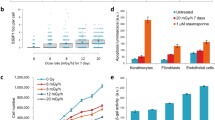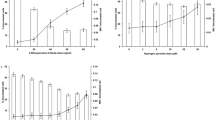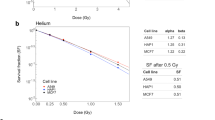Abstract
THERE have been several attempts to define conditions necessary for the fixation of the transformed state in mammalian cells in vitro. The relationship between fixation and proliferation after treatment has been studied in cell cultures exposed to methylcholanthrene1, X irradiation2,3 and SV40 virus4. Cells were exposed to the carcinogen while in the density-inhibited plateau phase of growth, and subsequently subcultured at low cell density so that they could resume cell division. Transformation frequency was always reduced by delaying subculture for 24 h or longer, suggesting that cells must divide soon after exposure to a carcinogen in order to fix the transformed state. No data were reported for subculture less than 24 h after treatment.
This is a preview of subscription content, access via your institution
Access options
Subscribe to this journal
Receive 51 print issues and online access
$199.00 per year
only $3.90 per issue
Buy this article
- Purchase on Springer Link
- Instant access to full article PDF
Prices may be subject to local taxes which are calculated during checkout
Similar content being viewed by others
References
Kakanuga, T., in Topics in chemical carcinagenesis (edit by Nakahara, W., Takayuma, S., Sugimura, T., and Octashima, S)., 32–34 (University of Tokyo Press, 1972).
Borek, C., and Sachs, L., Nature, 210, 276–278 (1966).
Borek, C., and Hall, E., Nature, 243, 450–453 (1973).
Todaro, G. J., and Green, H., Proc. natn. Acad. Sci. U.S.A., 55, 302–308 (1966).
Little, J. B., Nature, 224, 804–806 (1969).
Little, J. B., Radiat. Res., 56, 320–333 (1973).
Reznikoff, C., Bertram, J. S., Brankow, D. W., and Heidelberger, C., Cancer Res., 33, 3239–3249 (1973).
Reznikoff, C., Brankow, D. W., and Heidelberger, C., Cancer Res., 33, 3231–3238 (1973).
Terzaghi, M., and Little, J. B., in Experimental Lung Cancer. Carcinogenesis and bioassays (edit. by Karbe, E., and Park, J.), (Springer, Berlin, in the press).
Peterson, A. R., Bertram, J. S., and Heidelberger, C., Cancer Res., 34, 1600–1607 (1974).
Bertram, J. S., and Heidelberger, C., Cancer Res., 34, 526–537 (1974).
Little, J. B., and Hahn, G. M., Int. J. radiat. Biol., 23, 401–407 (1973).
Author information
Authors and Affiliations
Rights and permissions
About this article
Cite this article
TERZAGHI, M., LITTLE, J. Repair of potentially lethal radiation damage in mammalian cells is associated with enhancement of malignant transformation. Nature 253, 548–549 (1975). https://doi.org/10.1038/253548a0
Received:
Revised:
Issue Date:
DOI: https://doi.org/10.1038/253548a0
This article is cited by
-
Preventing diversification of malignant tumor cells during therapy
Clinical & Experimental Metastasis (1986)
-
Protease inhibitors suppress radiation-induced malignant transformation in vitro
Nature (1978)
Comments
By submitting a comment you agree to abide by our Terms and Community Guidelines. If you find something abusive or that does not comply with our terms or guidelines please flag it as inappropriate.



